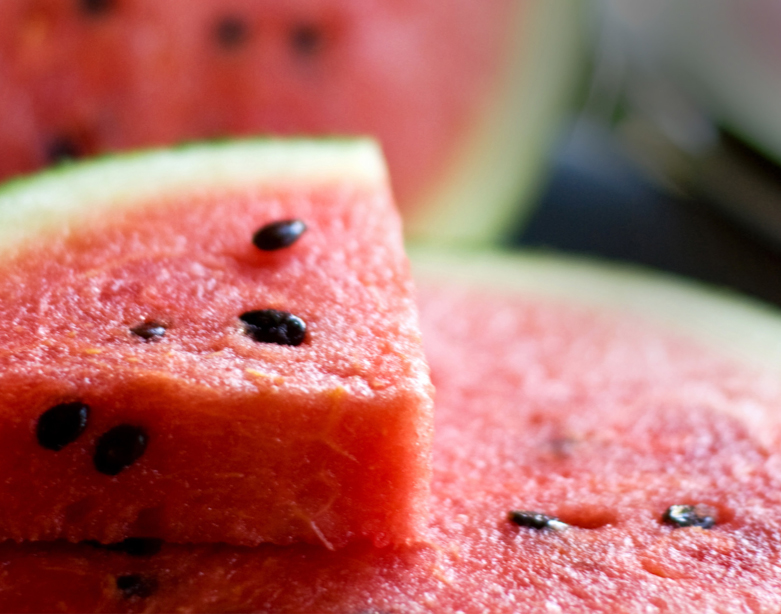The Mighty Watermelon
This juicy giant can quench your thirst, satisfy your sweet tooth and contribute to a healthy diet too. Find out what benefits this quintessential summer snack can offer.

Have you ever wondered how much of a watermelon is water? The delectable fruit’s name, it turns out, is no lie—it’s 92 percent. (By contrast, you’re only about 50 to 65 percent water.) But many of us find it 100 percent delicious. The summertime staple was first harvested nearly 5,000 years ago in Egypt. Today, luckily, you can find it in just about any food store.
POWER UP
Hydration is watermelon’s best nutritional asset, but the sweet-tasting fruit also provides a healthy dose of vitamins. a two-cup serving supplies your body with 30 percent of your daily value of vitamin C and 25 percent of vitamin A. It also contains vitamin B6, potassium, magnesium and phosphorus. eating watermelon is a guilt-free way to satisfy your sweet tooth too. Its water content makes it quite filling, and it can boost your energy while reducing your risk of kidney problems and heart disease.
DID YOU KNOW?
Watermelon is the most consumed melon in the country in terms of weight, and the U.S. ranks fifth among nations in watermelon production. (China’s the runaway champ, and among U.S. states Florida is the leader.) The U.S. was also home to the heaviest watermelon ever, according to the website Guinness World Records. In 2005, Lloyd Bright of Arkadelphia, Arkansas, grew a colossal watermelon that weighed in at an incredible 268.8 pounds!
BUY/STORE/SERVE
Pick a watermelon that feels solid and heavy for its size. It should have little or nothing in the way of bruising, cuts, dents or other imperfections. But that big yellow spot on the bottom is OK; it’s caused by the sun and shows that the fruit has ripened, or started to ripen.
Believe it or not, watermelons should be washed. The Food and drug administration recommends washing watermelon the way you do all fruits and vegetables—whether you plan on peeling it or using the rind. This is so that bacteria and dirt aren’t transferred when you cut it. Store watermelons at around 55° F. whole melons can stay at room temperature for seven to 10 days, while cut watermelon can be refrigerated for three to four days.
Slice it, dice it, cube it, chunk it or even juice it! There are myriad options when it comes to serving watermelon. You can even freeze the juice into ice pops that the kids will love. No matter how you consume it, watermelon is sure to benefit your body and please your taste buds too —COREY DONETZ

